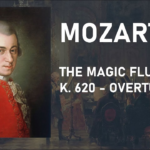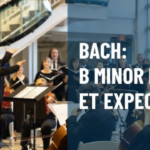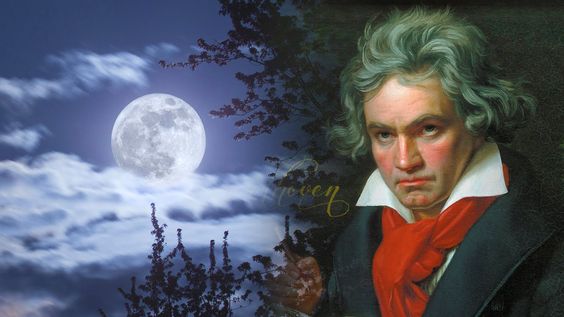Brandenburg Concerto No. 3 in G Major An Exploration of Bach’s Masterpiece

The Brandenburg Concerto No. 3 in G major, composed by the legendary Johann Sebastian Bach, is a vibrant illustration of baroque music at its finest. This concerto encapsulates the essence of musical dynamism, characterized by intricate interactions among strings and spirited melodies that invite listeners to engage with the very heart of music. The work not only demonstrates Bach’s formidable compositional skills but also serves as a reflection of its cultural context, revealing the delicate balance between artistry and social patronage during the baroque period. As we dive deeper into this monumental piece, we will explore its structure, themes, significance, accessibility, collaboration, and the lasting impact it has made on both musicians and audiences alike.
The Architectural Brilliance of the Brandenburg Concerto No. 3
Bach’s Brandenburg Concerto No. 3 stands out for its architectural brilliance, defined by innovative structures and virtuosic demands placed on its performers. Within the framework of this concerto lies a rich tapestry of sound that ebbs and flows with excitement, inviting an exploration of its central movement.
The Lively Allegro Movement
The first movement of the concerto, marked Allegro, serves as an exhilarating introduction into the world of Bach’s musical dialogue.
The interaction among three violins, viola, and continuo creates a sense of urgency and vibrancy. Each instrument contributes to a complex counterpoint that shapes a sonic landscape reminiscent of a bustling conversation. It’s as if each violinist is representing a distinct personality that adds to the overall experience, while the viola and continuo provide grounding, stability, and a sense of direction. The dialogue is not merely functional; it offers a compelling narrative that keeps the audience engaged from the very first note.
This lively exchange mirrors the dynamics of human communication, reflecting how individuals contribute their unique voices to create a harmonious whole. The interwoven melodies not only highlight the technical proficiency required of each musician but also emphasize the collaborative spirit inherent in ensemble playing. Every note seems to communicate a vibrant message, reinforcing the idea that music is a language all its own.
Counterpoint and Texture
To fully appreciate the intricacies of the Brandenburg Concerto No. 3, one must delve into the concept of counterpoint.
Counterpoint can be described as the art of combining distinct melodic lines to create harmony. In this concerto, Bach employs counterpoint masterfully, allowing each instrument to interact dynamically while maintaining its individuality. The texture created by the intertwining parts adds depth and complexity to the overall composition, producing a rich auditory experience that captivates the listener.
Listeners are invited to immerse themselves in the interplay of sounds. The violins dart around like playful children, while the viola and continuo anchor the performance—providing a strong foundation upon which the rest of the ensemble can build. This charming juxtaposition induces a sense of buoyancy, evoking emotions ranging from joy to anticipation, as the music unfolds gracefully before our ears.
Emotional Resonance Through Structure
The structural design of the Brandenburg Concerto No. 3 allows for a profound emotional resonance that transcends its auditory beauty.
A key element of this emotional journey lies in the deliberate pacing and dynamic contrasts that Bach employs throughout the movement. Moments of surging intensity give way to quieter passages, creating an ongoing tension that invites reflection. This balance between the urgent and the subdued acts as a metaphor for life’s complexities, illustrating how moments of chaos can coexist with periods of calm.
The emotional landscape presented in this concerto is akin to a vivid painting, with colors splashed across the canvas of sound. Whether one interprets these feelings as joy, struggle, or triumph, there’s no denying that Bach captures a spectrum of human experiences within the framework of his composition. It’s this ability to convey emotion that has cemented the Brandenburg Concerto No. 3 as an enduring masterpiece.
Thematic Depth and Interpretation

Beyond its structural genius, the thematic material of the Brandenburg Concerto No. 3 reveals a fascinating depth that invites varied interpretations. The music resonates on multiple levels, offering a glimpse into the joys and hardships of existence.
Juxtaposition of Formality and Spontaneity
At the heart of the thematic material lies an intriguing tension between formality and spontaneity.
Bach meticulously crafts each section of the concerto, yet there’s an undeniable sense of freedom woven throughout the fabric of the work. This duality invites listeners to engage with the piece in a personal manner, interpreting its themes according to their own life experiences. Just as merchants call out in a bustling marketplace, the violins dance around each other, creating a vivid tableau of musical exchanges.
This spontaneous energy can be beautiful in its unpredictability, mirroring the ebb and flow of daily life. In moments of uncertainty, we often find ourselves drawn to the familiar patterns of formality—whether in relationships or routines—while simultaneously yearning for the thrill of novelty. The Brandenburg Concerto No. 3 encapsulates this duality, allowing us to experience it through the lens of music.
Emotional Landscapes in Sound
The emotional landscapes painted by Bach in the Brandenburg Concerto No. 3 extend beyond mere notes on a page.
Listeners might interpret the soaring melodies as expressions of joy, while the intricate counterpoint evokes the struggles of human existence. This multifaceted approach allows for a deeper connection with the music, as each person engages with the concerto differently. One might feel uplifted by the driving rhythms or reflect on personal challenges that resonate with the melody.
In many ways, the concerto acts as a time capsule—preserving emotions that remain relevant even centuries after its creation. The themes explored within this piece tap into universal truths about the human experience, showcasing Bach’s ability to transcend the boundaries of time.
The Significance of Cultural Context
Delving into the cultural significance of the Brandenburg Concertos reveals the relationship between artists and patrons during the baroque era.
Written for Christian Ludwig, Margrave of Brandenburg, the concertos served not only as musical compositions for enjoyment but also as functions of cultural diplomacy. They showcase Bach’s prowess while entertaining the elite, leaving us to ponder the implications of patronage in the arts. Bach’s gift was acknowledged, but it also raises questions about the power dynamics between creators and their supporters.
Through this lens, the Brandenburg Concerto No. 3 becomes more than just a musical artifact; it transforms into a commentary on the role of art in society. The interplay of creativity and social circumstance sheds light on how artistic expression serves both aesthetic and cultural functions—shaping our understanding of historical contexts while resonating with contemporary audiences.
Accessibility and Contemporary Relevance

As we navigate the modern landscape of music, the Brandenburg Concerto No. 3 retains its allure, seamlessly connecting generations through its timeless appeal.
Digital Platforms and Availability
With the rise of digital platforms like Spotify, accessing classical masterpieces has never been easier.
This accessibility invites new audiences to experience the brilliance of Bach’s compositions, breaking down barriers that once limited exposure to classical music. Recordings of the Brandenburg Concerto No. 3 are readily available, allowing listeners from various backgrounds to encounter its majestic soundscape.
Moreover, the influx of diverse interpretations—from orchestral performances to contemporary arrangements—further enriches this accessibility. The concertos have found their way into various media, enhancing films, documentaries, and even advertising campaigns, reminding us of their relevance in popular culture. This adaptability showcases Bach’s ability to transcend time and space, encouraging audiences to engage with his work in innovative ways.
The Role of Live Performances
While digital platforms offer convenience, the magic of live performances remains unparalleled.
Attending a concert featuring the Brandenburg Concerto No. 3 allows audiences to witness the collaborative spirit embodied in Bach’s work. The palpable energy shared between the musicians and the audience creates an atmosphere of excitement, elevating the experience to new heights.
It is during these live performances that the nuances of each interpretation come alive. Musicians infuse their personalities into the piece, breathing new life into the well-known melodies. The thrill of watching artisans skillfully navigate the complexities of the concerto fosters a sense of connection that deepens appreciation for the music.
Timelessness Across Generations
Bach’s Brandenburg Concerto No. 3 continues to inspire both musicians and audiences alike, transcending its original context.
Its themes of collaboration, emotional depth, and dynamic interplay resonate profoundly in today’s world, where teamwork and cooperation are fundamental to success in various fields. The principles found in orchestral settings serve as valuable lessons for individuals navigating their own journeys.
The spirit of collaboration exemplified in the concerto encourages listeners to recognize the importance of working together, embracing diversity, and celebrating the unique contributions of others. In an era increasingly defined by individualism, the harmony achieved in this concerto reminds us of the beauty that emerges when we come together, much like a group of friends embarking on an adventure.
The Collaborative Spirit of the Brandenburg Concerto
One of the most striking features of the Brandenburg Concerto No. 3 is its embodiment of the collaborative spirit, wherein the interaction among musicians creates a unified musical experience.
Ensemble Dynamics and Communication
At the core of this collaborative nature lies the necessity for musicians to listen and respond to one another.
Each player contributes their voice to the ensemble, shaping the music through collective input. This dynamic process is reminiscent of a group of friends sharing ideas and taking turns leading, ultimately creating a memorable adventure together. Such collaboration requires trust, empathy, and a shared vision—qualities that extend far beyond the realm of music.
In rehearsals and performances, musicians develop an intuitive sense of timing and phrasing as they engage with their fellow players. This collaborative effort enriches their understanding of the score, transforming what might otherwise be a collection of notes into a profound expression of human emotion.
Lessons in Teamwork and Cooperation
The collaborative spirit of the Brandenburg Concerto extends beyond the concert hall and into our everyday lives.
Cooperation and teamwork are essential for success in various fields, echoing the principles found in orchestral settings. Just as each instrument plays a vital role in crafting the overall sound, individuals in any venture contribute their strengths to achieve common goals.
In a world where competition often overshadows collaboration, the Brandenburg Concerto No. 3 serves as a poignant reminder of the beauty that arises from unity. It invites us to celebrate diversity, acknowledging that each person’s unique contributions shape a richer, more vibrant tapestry.
A Microcosm of Life’s Complexities
As we traverse the vibrant landscape of the Brandenburg Concerto No. 3, we uncover a microcosm of life’s complexities—a balance between individuality and unity, emotion and intellect, tradition and modernity.
Bach’s masterpiece encapsulates this intricate interplay, allowing listeners to engage with the music on multiple levels. The concerto becomes a mirror reflecting our own experiences, illuminating the delicate threads that bind us together while honoring our unique paths.
This symbiotic relationship between individuals and the larger community echoes through the ages, reminding us of our shared humanity. As we delve into this rich musical tapestry, we are called to embrace the complexities of life while appreciating the beauty that arises when we unite in harmony.
Conclusion
In exploring the Brandenburg Concerto No. 3 in G major, we embark on a journey through the rich terrain of Bach’s genius. From its architectural brilliance and thematic depth to its accessibility and collaborative spirit, this concerto stands as a testament to the enduring power of music.
As we navigate the complexities of our own lives, we are reminded of the lessons embedded within this masterpiece. The interplay of individual voices harmonizing in unity reflects our shared human experience, inviting us to embrace both our uniqueness and our connections to one another.
Bach’s legacy endures, inspiring generations to engage with the beauty of music, fostering collaboration, and celebrating the emotional landscapes that remind us of our shared humanity. The Brandenburg Concerto No. 3 continues to resonate, inviting us to listen, reflect, and connect in a world that often yearns for harmony.











